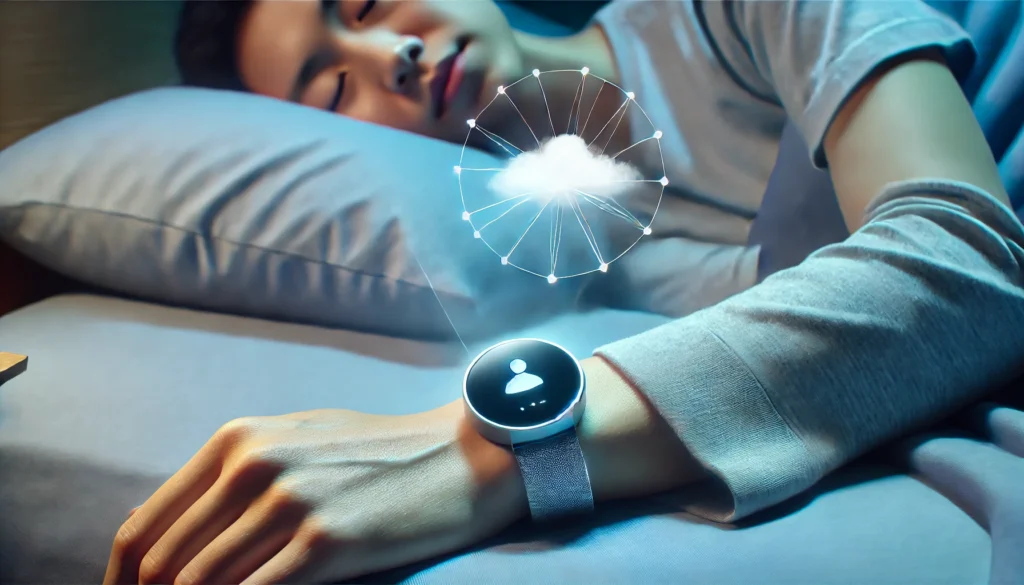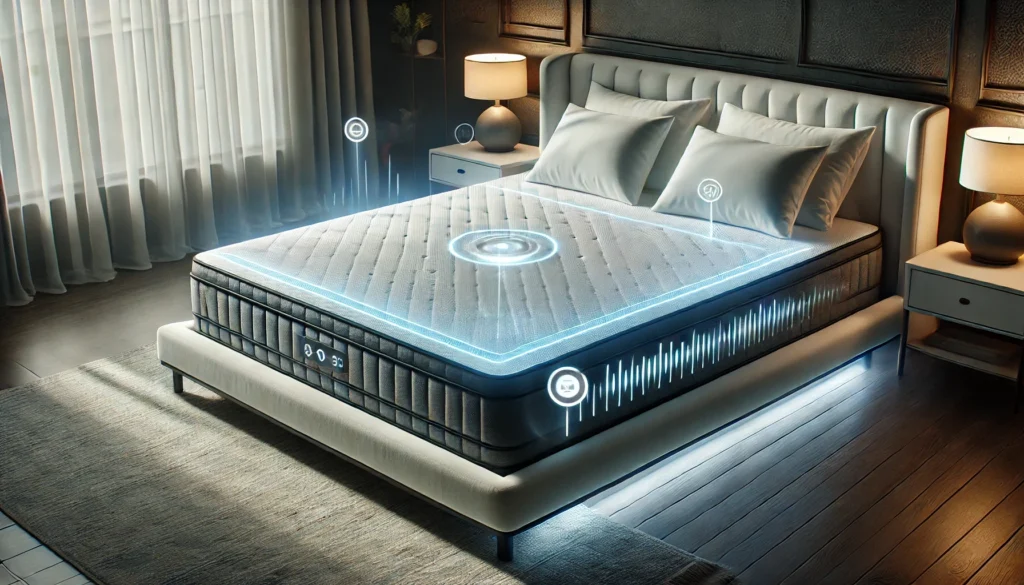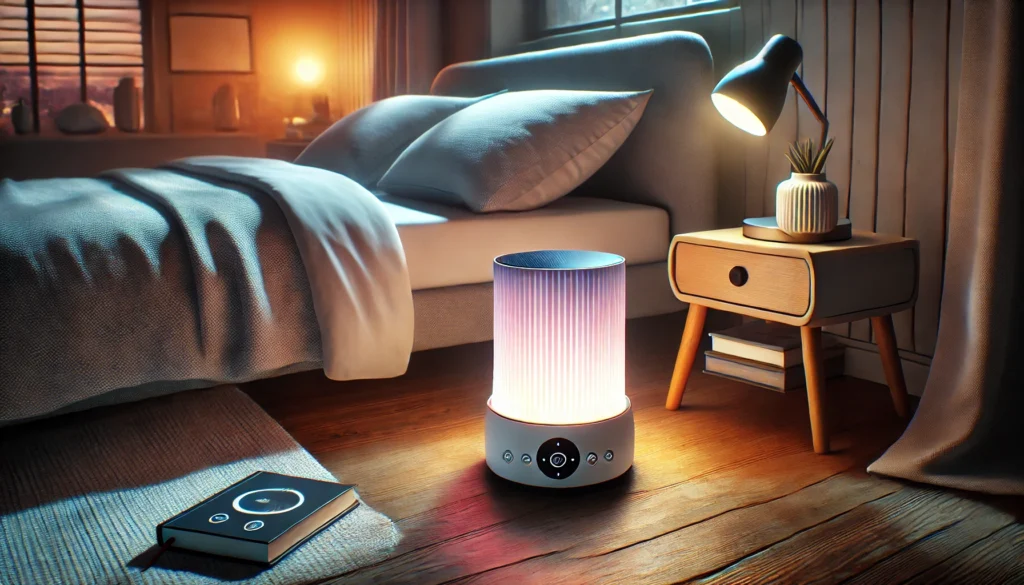The concept of using technology to improve sleep is not new. Historically, humans have been searching for effective sleep remedies for centuries, from herbal concoctions to more recent pharmaceutical interventions. However, the integration of electronic devices into this quest represents a significant shift towards a more data-driven and personalized approach.
Historical Context
Back in the early 20th century, sleep aids typically took the form of medicinal tonics and herbal teas. These remedies were rooted in traditional practices and aimed at calming the mind and body. As our understanding of sleep evolved, so too did the methods of inducing it. The invention of the electroencephalogram (EEG) in the 1920s, which measures electrical activity in the brain, marked a pivotal moment in sleep research. This device set the stage for modern sleep studies and, eventually, the development of electronic sleep aids. As the century progressed, sleep research expanded, leading to the creation of more sophisticated tools and techniques to study and improve sleep patterns.
Evolution of Sleep Technology
The transition from herbal remedies to electronic devices was gradual, driven by advancements in both technology and sleep science. In the mid-20th century, researchers began to explore the potential of sound and light in influencing sleep. Early experiments with white noise and light therapy laid the groundwork for today’s innovative sleep aids. As computers and sensors became more compact and affordable, they were integrated into consumer devices, allowing for the development of personalized sleep solutions. This evolution has enabled a deeper understanding of sleep patterns and the creation of targeted interventions to address specific sleep disruptions.
Modern-Day Innovations
Today, electronic sleep aids encompass a wide range of devices and technologies designed to improve sleep quality. These include wearable devices, smart mattresses, sound machines, and light therapy gadgets, each offering unique benefits and targeting different aspects of sleep disruption. Wearable technology, such as the Oura Ring and Fitbit, not only tracks sleep patterns but also provides users with insights into their sleep quality, helping them make informed decisions about their sleep hygiene. Meanwhile, smart mattresses adjust their firmness and temperature to suit individual preferences, enhancing sleep comfort. Sound machines and light therapy gadgets offer solutions for those struggling with environmental sleep disturbances, providing soothing sounds or mimicking natural sunlight to regulate circadian rhythms.
You May Also Like: Benefits of Consistent Sleep Schedules Explained

The Science Behind Sleep Aid Devices
Understanding how electronic sleep aids work requires a grasp of the basic principles of sleep science. Sleep is a complex physiological process involving various stages, each characterized by different brain wave patterns and physiological responses.
Sleep Stages and Technology
Modern sleep aids often focus on optimizing the transition between these stages or enhancing the duration of specific stages, such as REM (rapid eye movement) sleep, which is crucial for cognitive restoration and memory consolidation. During REM sleep, the brain is highly active, and vivid dreaming occurs. Technologies like sound machines utilize white noise or soothing sounds to mask disruptive noises and facilitate a smoother transition into deeper sleep stages. These sounds help to create a stable auditory environment, reducing the likelihood of awakenings. Meanwhile, light therapy devices mimic natural sunlight to regulate circadian rhythms, helping those with sleep disorders like insomnia adjust their sleep-wake cycles. By synchronizing the body’s internal clock with natural light cues, these devices can improve sleep onset and quality.
Data-Driven Insights
Electronic sleep aids often come equipped with sensors that collect data on a user’s sleep patterns. This data can be analyzed to identify trends, pinpoint issues, and tailor sleep interventions to the individual’s needs. For example, a device might detect frequent awakenings during the night and suggest behavioral changes or environmental adjustments to improve sleep continuity. The insights gained from this data allow users to understand their sleep behavior better and make evidence-based decisions to enhance their sleep quality. Additionally, some devices offer personalized feedback and recommendations, helping users implement effective strategies for sleep improvement.
The Role of Artificial Intelligence
As technology advances, artificial intelligence (AI) plays an increasingly significant role in the functionality of sleep aids. AI algorithms can process vast amounts of sleep data, identifying patterns and correlations that might be missed by human analysis. This capability allows for the development of more sophisticated sleep interventions and the potential for real-time adjustments to enhance sleep quality. For instance, AI-powered devices can learn from a user’s sleep history, predicting and mitigating potential disruptions before they occur. This proactive approach represents a significant leap forward in the personalization and effectiveness of electronic sleep aids.

Benefits of Electronic Sleep Aids
The allure of electronic sleep aids lies in their potential to offer a more holistic and personalized approach to sleep improvement. Here are some of the key benefits these devices offer:
Personalized Sleep Insights
One of the most significant advantages of electronic sleep aids is their ability to provide personalized feedback based on real-time data. This empowers users to understand their sleep patterns better and make informed decisions about lifestyle changes or interventions. By tracking metrics such as sleep duration, efficiency, and disturbances, these devices offer a comprehensive view of an individual’s sleep health. This information can be used to identify factors contributing to poor sleep and develop targeted strategies for improvement. Personalized insights also allow users to monitor the impact of changes in their routine or environment, enabling them to fine-tune their sleep hygiene practices.
Enhanced Sleep Quality
By addressing specific sleep disruptions, such as noise or irregular light exposure, electronic sleep aids can enhance overall sleep quality. Improved sleep leads to better cognitive function, mood regulation, and overall well-being. Devices like sound machines and smart lighting systems create an optimal sleep environment by minimizing external disturbances and aligning the body’s natural rhythms. Additionally, wearable devices provide feedback on sleep quality, encouraging users to adopt healthier sleep habits. By facilitating deeper, more restorative sleep, electronic sleep aids contribute to improved daytime performance and reduced risk of chronic health issues associated with poor sleep.
Convenience and Accessibility
With the proliferation of smartphone apps and affordable gadgets, access to electronic sleep aids is more convenient than ever. Users can easily integrate these devices into their daily routines, making them a practical solution for those seeking to improve their sleep without significant lifestyle changes. Many sleep aids offer seamless integration with other health and wellness platforms, providing a comprehensive overview of an individual’s health. This accessibility ensures that users can benefit from the latest advancements in sleep technology without needing to invest in expensive or cumbersome equipment. As a result, electronic sleep aids are an attractive option for anyone looking to enhance their sleep health with minimal effort.

Future Implications of Sleep Technology
As technology continues to evolve, so too will the capabilities of electronic sleep aids. The future holds exciting possibilities for even more advanced devices that incorporate artificial intelligence and machine learning to predict and address sleep issues proactively.
Integration with Health Platforms
We can anticipate a closer integration of sleep aid devices with broader health platforms, allowing for a more comprehensive view of an individual’s health and wellness. This synergy could lead to more effective interventions and a better understanding of the interconnectedness of sleep with other health factors. For instance, sleep data could be combined with information on physical activity, nutrition, and stress levels to provide a holistic assessment of an individual’s well-being. This integrated approach would enable the development of personalized health plans that address multiple aspects of lifestyle and health, ultimately leading to improved outcomes.
Potential Challenges
However, the rise of electronic sleep aids is not without its challenges. Concerns about data privacy, over-reliance on technology, and the potential for misinterpretation of sleep data are important considerations that need to be addressed as these devices become more widespread. Ensuring that users’ data is securely stored and used ethically is paramount to maintaining trust in these technologies. Additionally, there is a risk that individuals may become too dependent on electronic sleep aids, neglecting other important aspects of sleep hygiene. It is essential for users to strike a balance between leveraging technology and maintaining healthy sleep habits through lifestyle choices.
Ethical and Regulatory Considerations
As electronic sleep aids become more prevalent, ethical and regulatory considerations will play a crucial role in their development and deployment. Manufacturers must ensure that their devices comply with relevant standards and regulations to protect consumer safety and privacy. Additionally, ethical guidelines should be established to govern the use of AI in sleep technology, ensuring that these tools are used responsibly and transparently. Collaboration between industry stakeholders, healthcare professionals, and regulatory bodies will be essential to navigate these challenges and maximize the benefits of electronic sleep aids.
Conclusion
In conclusion, electronic sleep aids represent a promising frontier in the quest for better sleep. By leveraging technology, these devices offer personalized insights, enhanced sleep quality, and convenient access to sleep improvement tools. As advancements in technology continue, the potential benefits of electronic sleep aids will likely expand, offering hope to those struggling with sleep-related issues. Whether you’re a health and wellness coach seeking reliable information for clients, a science journalist aiming to demystify complex topics, or a biohacker striving for optimal sleep, understanding the benefits of electronic sleep aids can be a valuable asset in your pursuit of better sleep health. By embracing these innovations, individuals can take proactive steps toward achieving the restorative sleep necessary for a healthy and fulfilling life.
Further Reading:
The 8 Best Sleep Gadgets, Tested by Lifestyle Editors
Sleep aids: Understand options sold without a prescription
The best sleep aids recommended by experts: from blue light-blockers to apps to help you nap
Important Note: The information contained in this article is for general informational purposes only, and should not be construed as health or medical advice, nor is it intended to diagnose, prevent, treat, or cure any disease or health condition. Before embarking on any diet, fitness regimen, or program of nutritional supplementation, it is advisable to consult your healthcare professional in order to determine its safety and probable efficacy in terms of your individual state of health.
Regarding Nutritional Supplements Or Other Non-Prescription Health Products: If any nutritional supplements or other non-prescription health products are mentioned in the foregoing article, any claims or statements made about them have not been evaluated by the U.S. Food and Drug Administration, and such nutritional supplements or other health products are not intended to diagnose, treat, cure, or prevent any disease.


